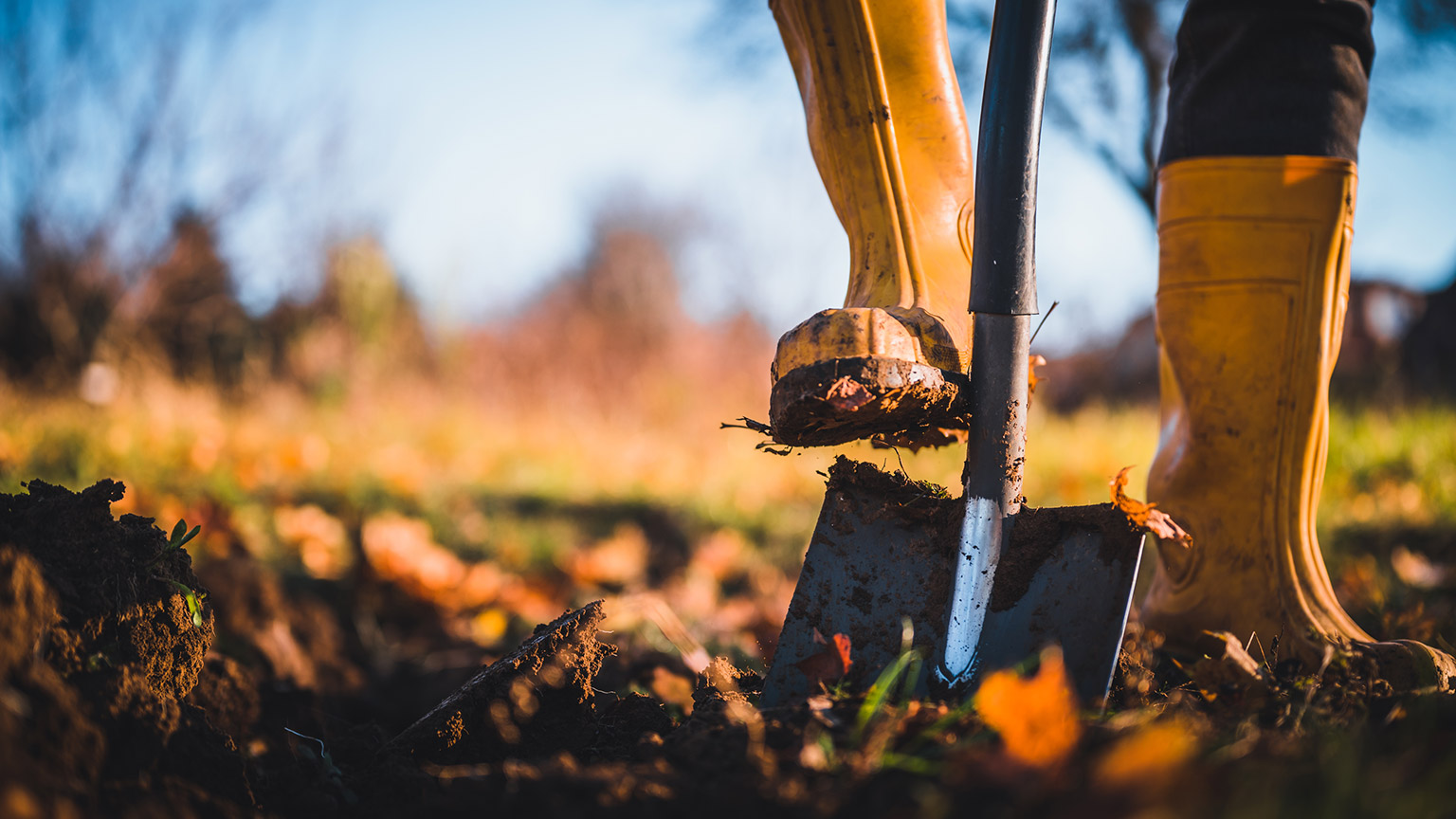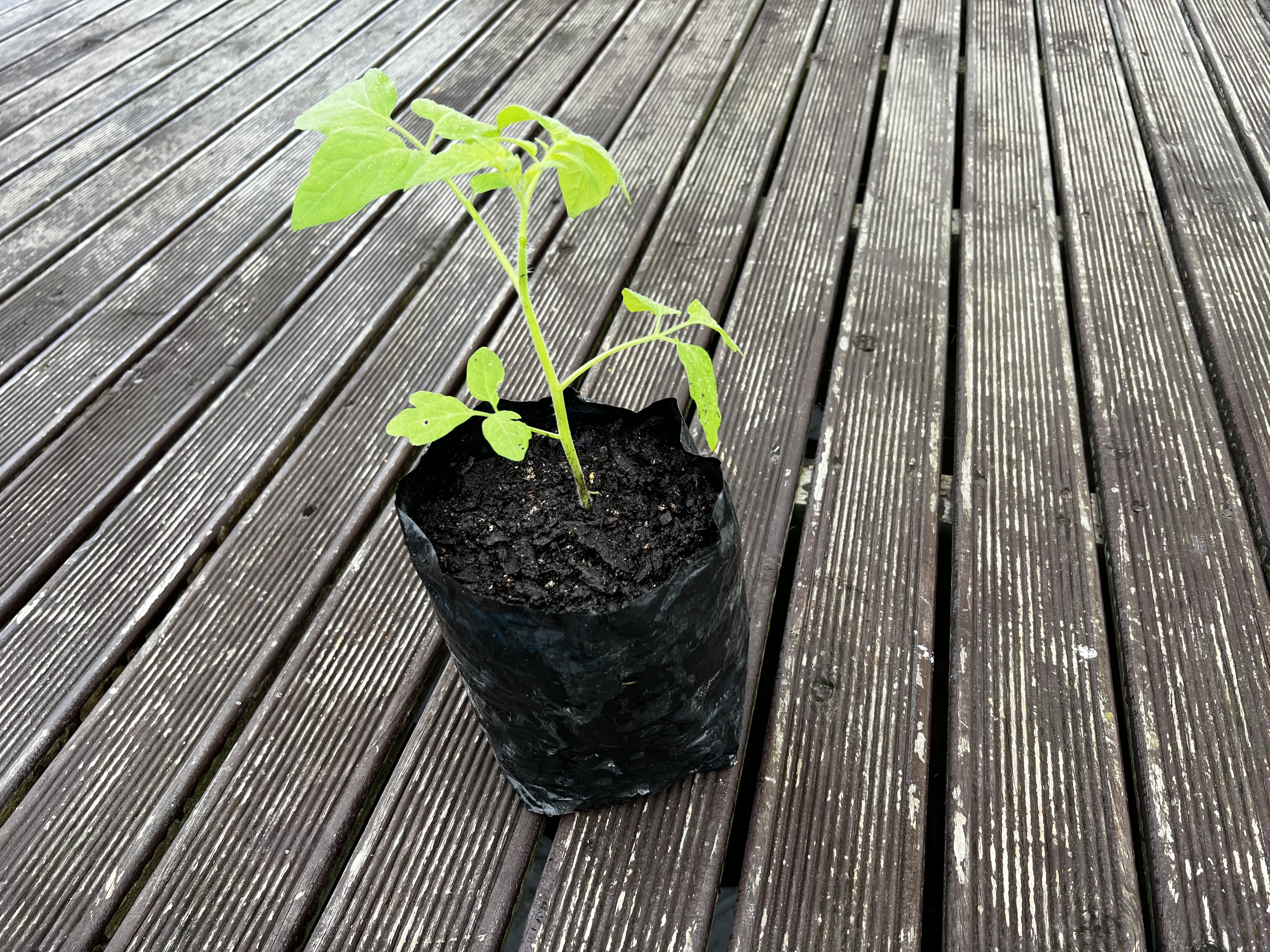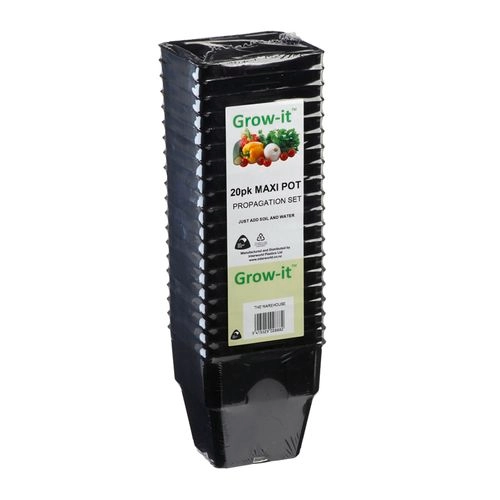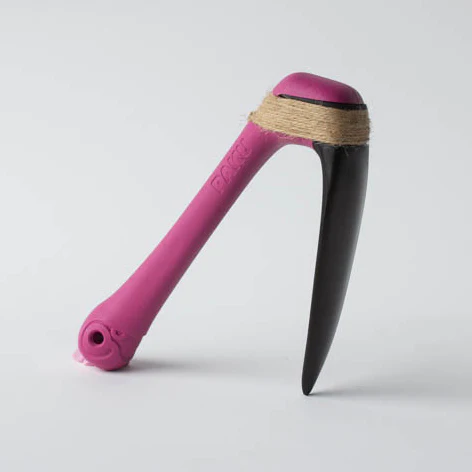The tools and products used in horticulture provide the means to turn a lifeless site into a thriving, colourful, healthy garden.
| Tools | A device, especially one held in the hand, used to carry out a particular task. |
|---|---|
| Products | Something that is used to perform a function or task, but gets used up, or breaks down over time. For example, a seed tray is used to germinate seeds in, but after a few growing seasons, these may break apart. |
We started this module by defining the words 'tools' and 'products'. We'll now explore which tools and products are the tools and products of our trade.
Tools for measuring and setting out
Tape measures
There are two main types of tape measures used for measuring and setting out gardens and landscapes:
- Builder’s tape measure – used for measuring short distances and when milimetre accuracy is needed. Usually come in 3-5m lengths. They automatically retract when released, but to avoid damage, it is a good idea to slow the speed of retraction by applying friction to the tape.
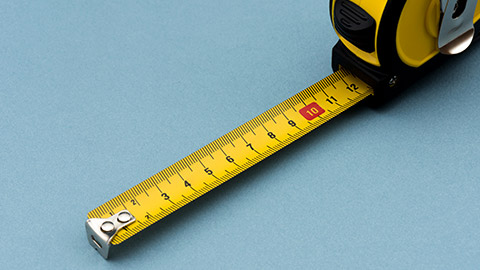
- Surveyor’s tape – used for measuring longer distances. Usually comes in 50m length. Does not automatically retract.
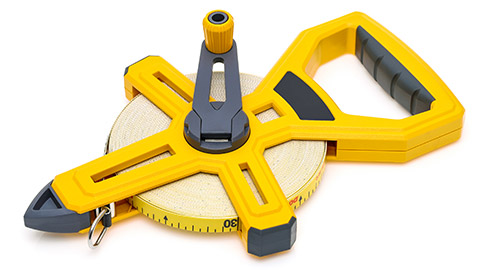
For both types, if they gets dirty, clean all parts after use.
Stringline
This is used to create straight lines when setting out. The string stretches, so pull it tight enough to create a straight line between your chosen points. Tie a loop in the end and place that over your first peg. To secure in place at other pegs simply wrap around 3-4 times and it will stay in place due to friction. Don’t tie other knots in the stringline. Carefully wind up after use.
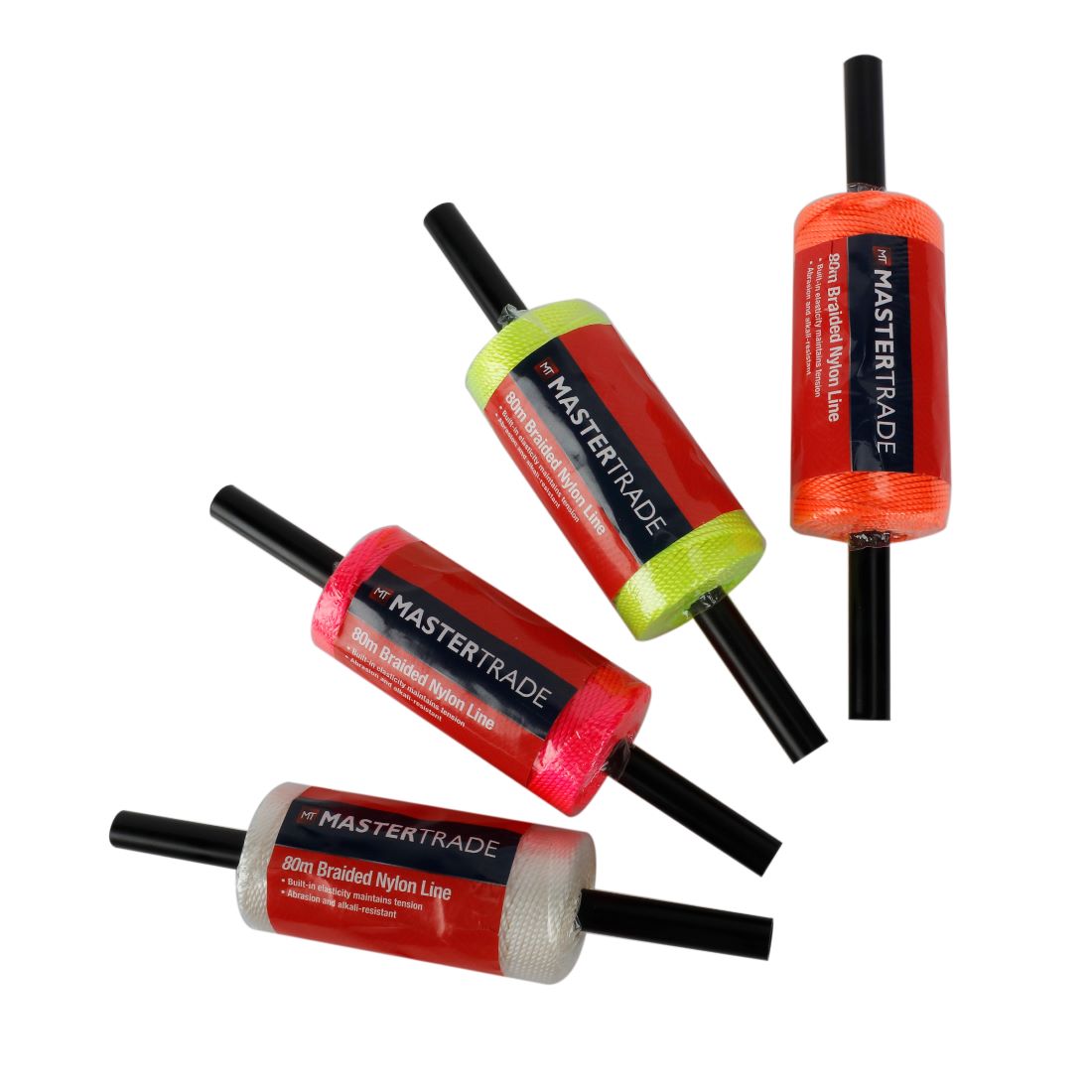
Source: Placemakers.co.nz
Pegs
You can buy packs of set-out pegs from hardware stores, or create your own from timber (ideally 25x25mm or 50x50mm) with one end of each peg cut to a point. These should be about 400-600mm long.
Alternatively, you can use metal poles that you may have lying around, such as curtain tracks cut to length.
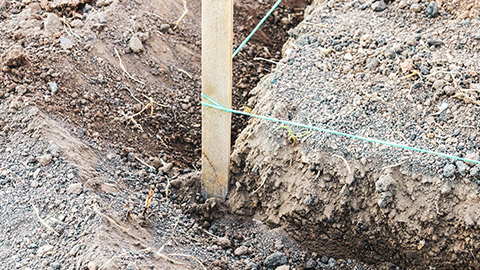
Spray paint
Mark-out spray paint comes in cans that are designed to be used upside down. Normal spray paint cans don’t work very well for marking out. Fluorescent pink is considered to be the most visibe on grass. Follow the instructions on the can.
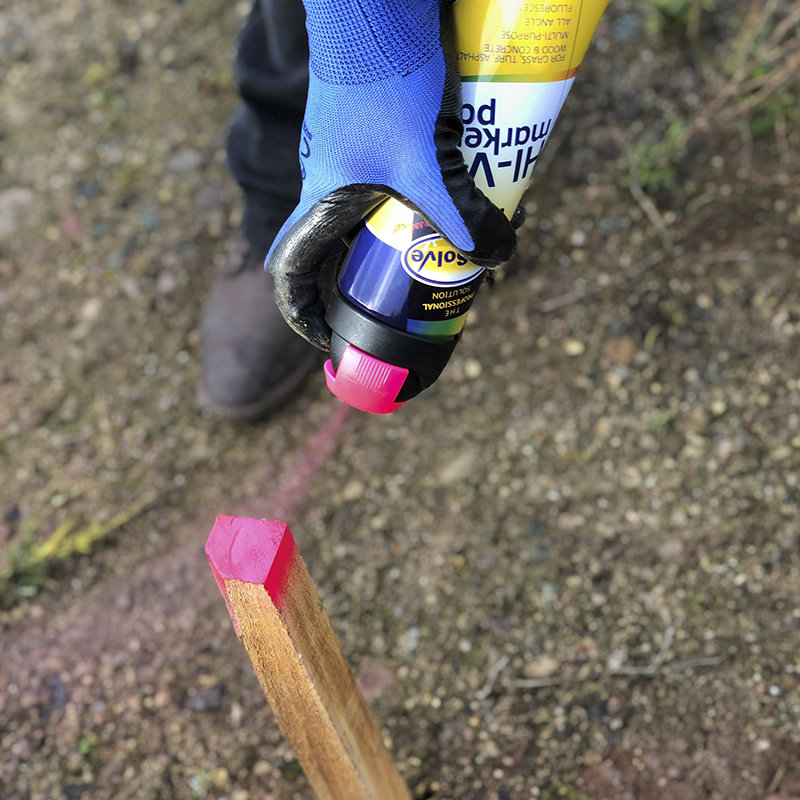
Source: linemarkerpaint.co.uk
Sledgehammer or mallet
A sledgehammer (a hammer about the size of an axe) or a mallet (a smaller, but still extra heavy hammer) is best for hammering in pegs. If they get dirty, clean all parts after use.
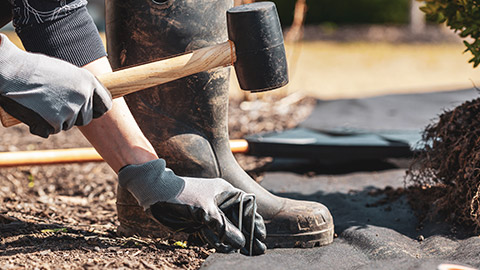
Tools for digging
Spades
Spades come in different shapes and sizes for slightly different uses, but they are all designed for digging (which is how they are different to shovels). The part that digs into the soil first is called the blade.
If it gets dirty, clean all parts after use. If the blade gets blunt, sharpen it using a sharpening stone, or grinder.
A spade with a long steel handled is a good investment if you expect to do a lot of digging, particularly in hard clay soils.
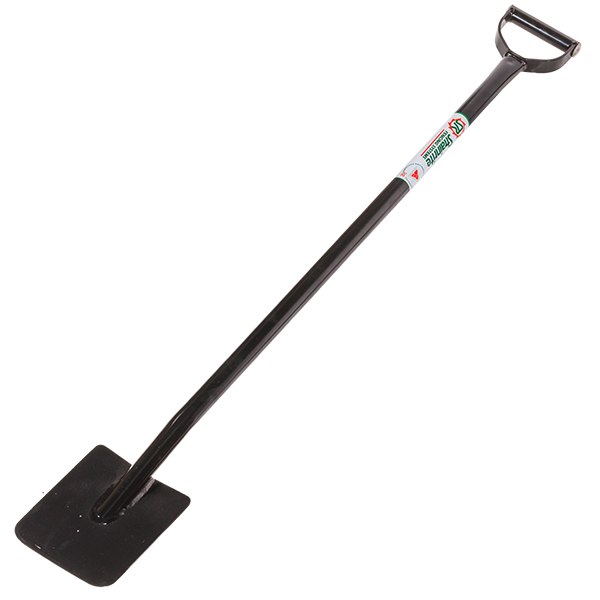
Tools for shifting material
Shovels
These are used for moving material, such as soil or compost. They come in two main types:
| Square-mouth | Ideal for scraping material off a hard surface, such as a concrete driveway, but can be harder to press into a pile of material. |  |
|---|---|---|
| Round-mouth | Easier to plunge into a pile of material, but are less useful when it comes to scraping material off a hard surface. | 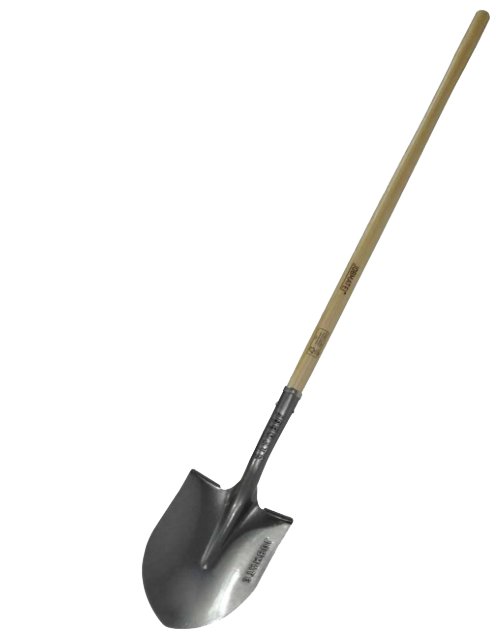 |
Like with spades, if they get dirty, clean all parts after use. If the blade gets blunt, sharpen it using a sharpening stone, or grinder.
The difference between spades and shovels:
In a nutshell:
- Spades: Digging
- Shovels: Scoop and move materials (shoveling)
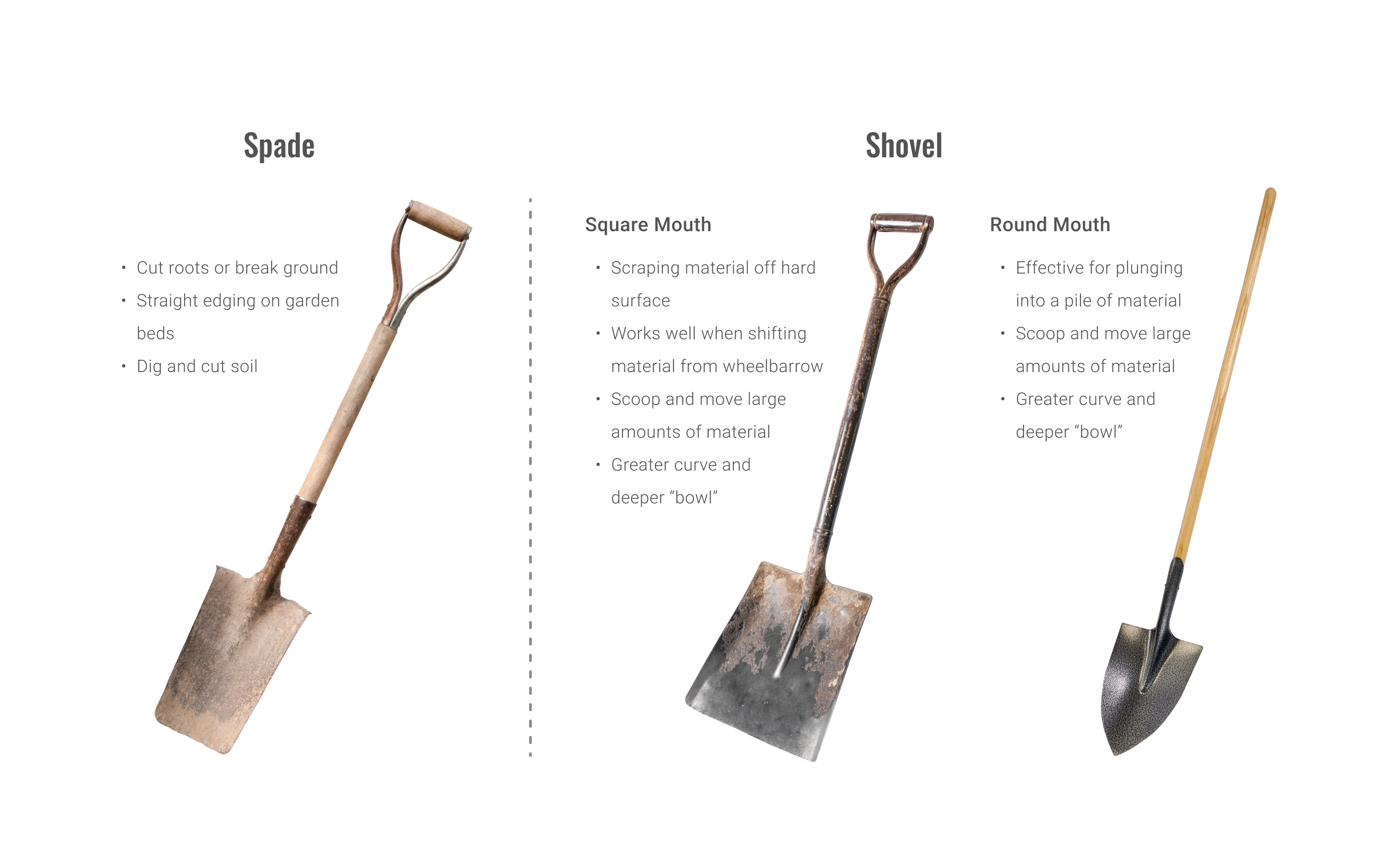
Garden forks
A garden fork is a useful tool. It can be used for moving coarse material, like raw or partially decomposed compost, but also for aerating soil, and harvesting root crops.
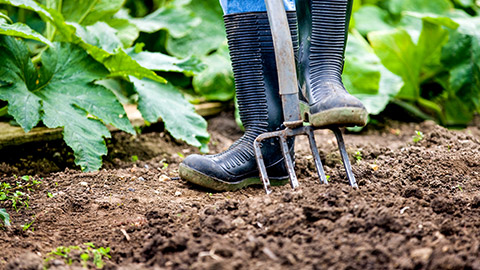
For small garden operations, a standard garden fork will work just fine. For larger operations, a broadfork or Forksta™ (made in Aotearoa) will be a worthwhile investment.
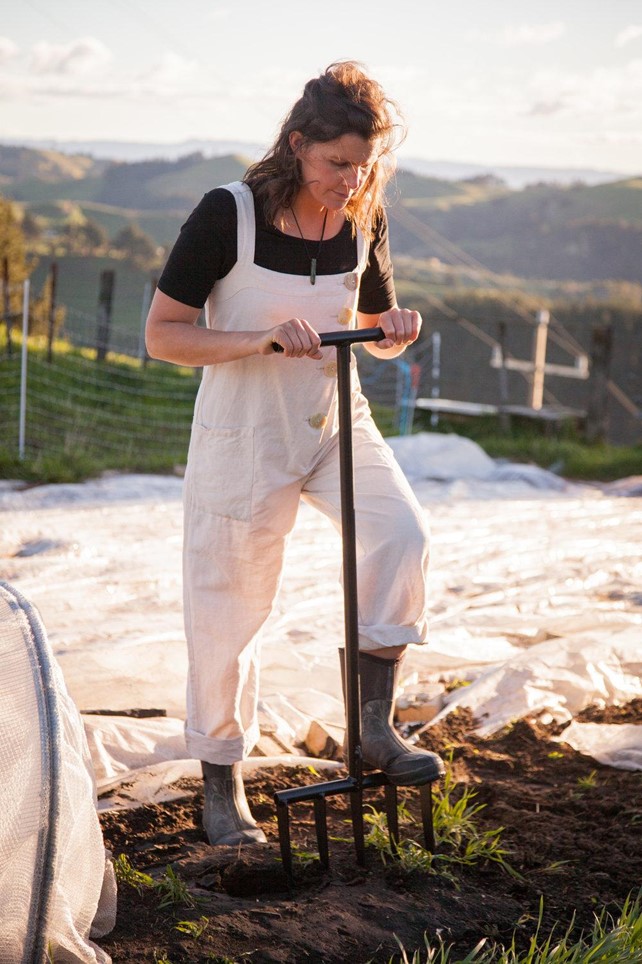
A woman uses a Forksta™ broadfork to aerate the soil. Source: allincredible.co.nz
Wheelbarrows
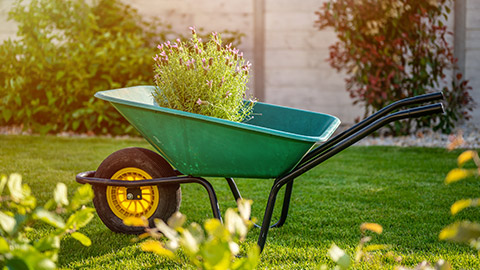
Wheelbarrows are excellent for moving bulk materials, like soil and compost, around your site. But they are also surprisingly useful for moving tools and seedlings too.
Check the tyre pressure from time to time and add more air if required. Check and, if required, tighten bolts, annually or more frequently.
For levelling or collecting material
Rakes
The main types of rakes are:
- leaf rakes
- garden rakes
- landscape rakes (sometimes referred to as bed prep rakes).
Remove any rocks that get stuck between the tynes.
| Garden rake | Used for pulling out weeds that have already been hoed, and for spreading and leveling soil or amendments. | 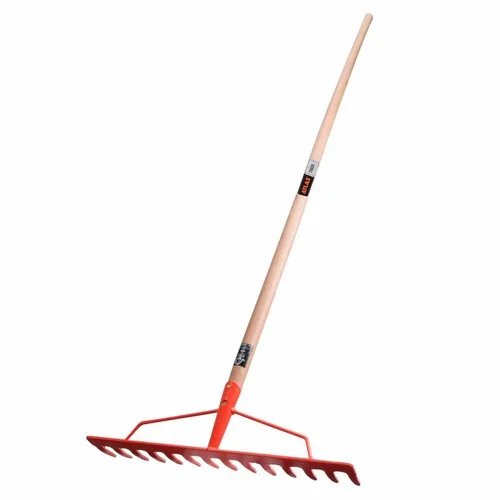 |
|---|---|---|
| Leaf rake | Used for collecting leaves – useful when making compost – but are too fragile for other gardening uses. | 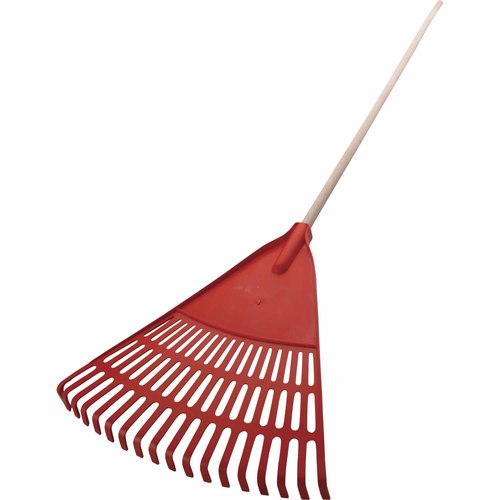 |
| Landscape rake | These are much bigger than standard garden rakes. They often come in 750mm (30”), 900mm (36”) and 1065 (42”) width. Given our standard raised beds are 750mm, the smallest would be a fine investment. | 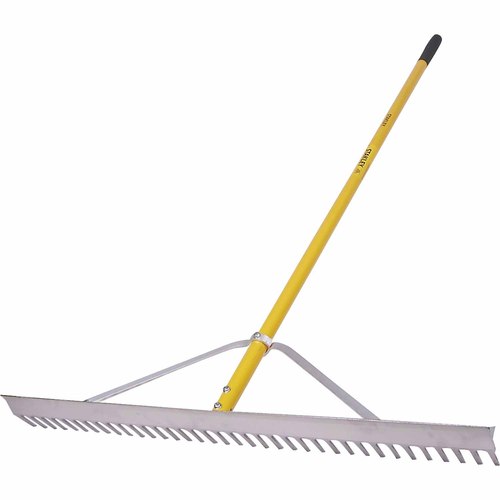 |
All images from Mitre10
For watering
In this section, we’re only looking at the basics of irrigation (watering). The two main tools we can use are:
- Watering can
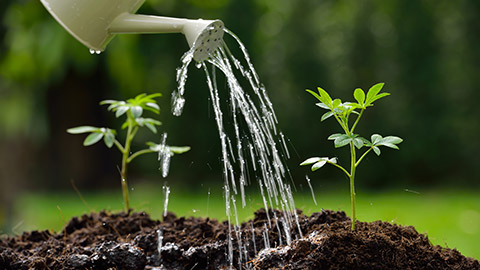
- Hose with nozzle.
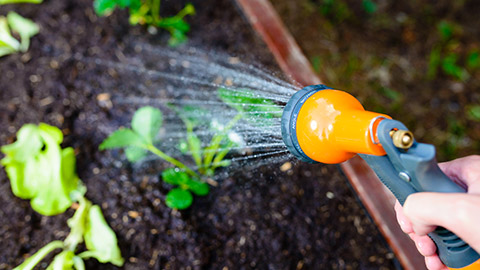
A watering can is useful for small gardens, such as small potted plants. For larger gardens, a hose and nozzle is needed.
A good quality hand nozzle – ideally metal – will last many years. Use the mist setting to keep seed trays moist. Use the shower setting to thoroughly water your plants.
When watering plants, water once to wet the top of the soil and then come back and water a second time a minute or two later to get deep into the soil.
For cultivation and weeding
One of the principles of organic gardening is that we cultivate the soil, rather than simply getting rid of the weeds. In practice this means, using a hoe to break up the soil in the spaces between your plants to remove the weeds but also to let water move into the soil easily. If we only remove the weeds (such as if we pull them out by hand), the soil can form a hard layer which means water will run off, rather than wash down into the soil.
Hoes and manual cultivators
There is a wide range of hoes and manual cultivators.
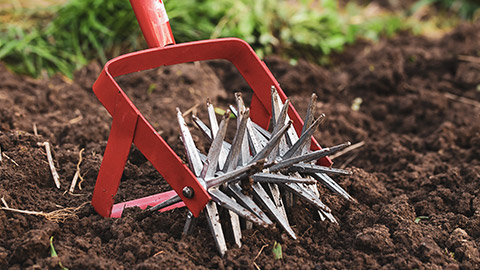
This is a rotating tyne hand cultivator — an effective tool for loosening the soil (tilling).
The oscillating stirrup hoe is a tool of choice for many small market gardeners. They are expensive but extremely good at cultivating the soil with minimal effort. Watch this video to see how it works.
If it gets dirty, clean all parts after use. If the blade gets blunt, sharpen it using a sharpening stone, or grinder.
Rotary hoes
Also sometimes referred to as rototillers, rotary hoes are machines that have long tynes that spin around a horizontal shaft and break up the soil. Rotary hoes can be hired from most hire centres.
For care and maintenance information, follow the manufacturer’s or hire centre’s instructions and wear all required safety equipment when operating a rotary hoe.
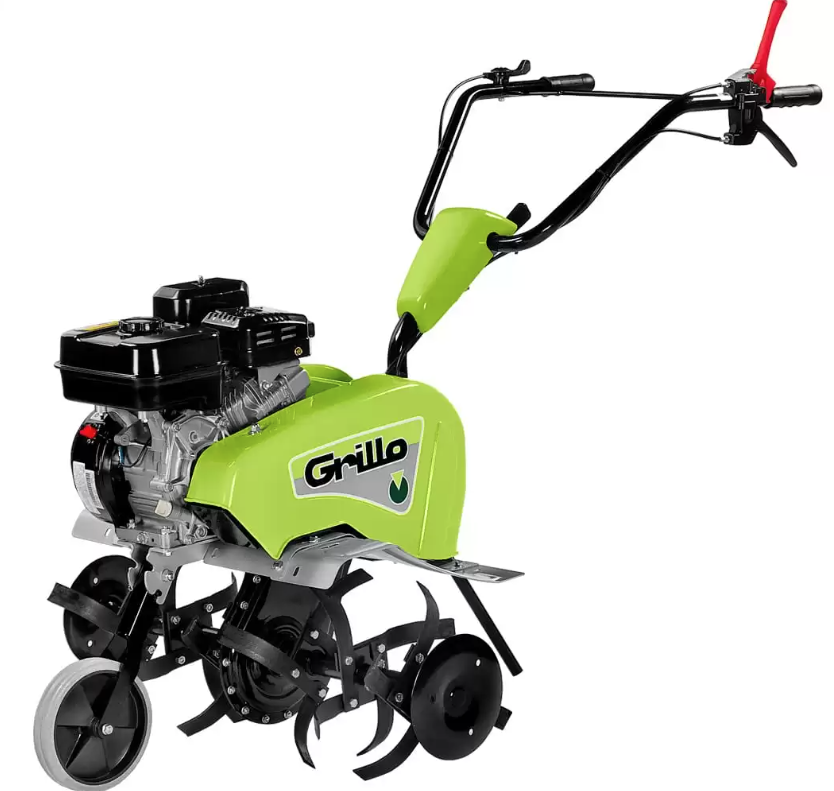
Source: stihlshopchristchurch.co.nz
Other products used in horticulture
Seed trays
Seed trays can be bought from garden centres and hardware stores.
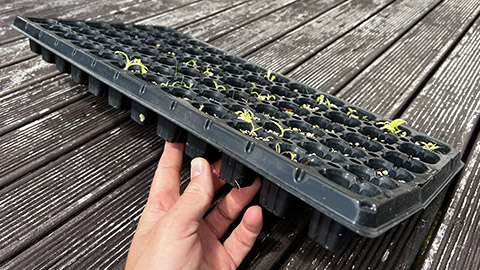
Pots and bags
Planter Bags (PBs) and Plant Pots are the main products that plants from nurseries are sold in. If you are planning on growing plants to sell or give to others, you’ll need some of these.
| Planter Bags (PBs) |
They come in a variety of sizes, which are numbered according to their size (in pints). For example, PB3 is 3 pints, which is 1.4 litres. Common sizes are PB3, PB5, PB8, PB12, PB18, PB40, PB95 |
|
| Plant Pots | Usually, the seedlings you buy at the garden shop come in these. They are easily reused and come in a large variety of sizes. |
Source: Bunnings |
Landscape fabric
Sometimes called weed mat, landscape fabric is used on the ground to stop weeds growing. It doesn’t break down over time so is a good solution where you need to permanently stop weeds. It is a woven fabric so it lets water pass through it.
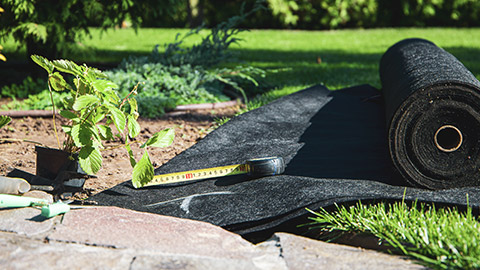
Cardboard
An alternative to landscape fabric is flattened brown cardboard boxes. The cardboard keeps weeds at bay for a few weeks, before it breaks down. This is usually long enough to give your plants a good headstart. When it breaks down it builds up the organic content of the soil.
If you don’t like the look of it, cover it with a thin layer of compost or organic tree mulch.
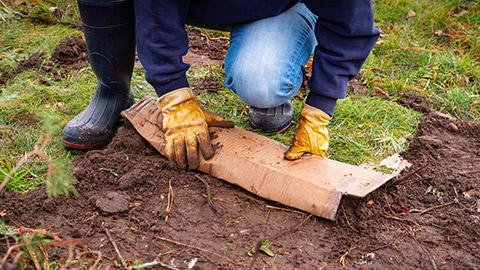
Organic tree mulch
Organic tree mulch is formed by finely chopping tree branches and leaves in a wood chipper. Fresh mulch can be used on path between garden beds. If you are going to put mulch on your garden beds you should used aged mulch.
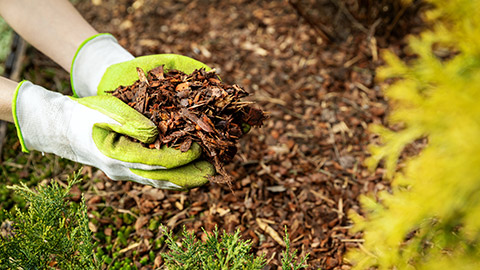
Activity – Tools fit for purpose
Complete the following activity by selecting the correct task to perform with the tool.

This traditional Māori Pou can be found in Waitangi Regional Park in Napier. It shows Hine Raumati, the Summer Maid — the representation or personification of summer. She looks over the cultivation of kai (foods products, such as the kūmara, and the fruits of the forest). In Māori legend, she is one of the two wives of the sun god Rā.
The earliest Māori in Aotearoa developed their own tools for gardening. The names and descriptions below are gathered from Teara.govt.nz. Select the links to view images and learn more about each one.
- hengahenga – a type of hoe
- kō – a digging stick about 2 metres long, used with or without a foot-tread to roughly break up the ground
- kāheru – a spade used for lighter work like creating mounds and cultivating kūmara. There were three types: one with a short, square blade, one with a triangular blade, and one which resembled the kō
- puka – a long-bladed spade
- tipi or pere – a very small blade attached to a handle and used to clear weeds
- ketu – a small paddle-like tool, used to loosen the soil around plants or before taking tubers out
- patupatu – used to break clods
- kōkō – used as a shovel
- timo – a type of grubber.” (Adds, n.d.)
Activity – Traditional tools and practices used today
1. A fresh approach to traditional Māori tools
If you’re interested in beautiful, Māori-designed gardening tools for tamariki (kids) and big kids, check out Paku. These products are made from recycled materials and designed to last.
The Paku Timo in mā whero (pink)
Source: https://www.paku.nz/products/timo-7
2. Read this article, on Stuff, about Adrian Sutherland, a grower who tossed in the towel in Australia to return to his roots and grow kai (food) in Aotearoa.
Sutherland... works hard to implement mātauranga Māori practices into his garden, caring for Papatūānuku.
Congratulations! You have completed the first module in your course. Gather the perma-links to your journal posts, then download, complete and submit your two Assessments. Waimarie pai! Good luck!
